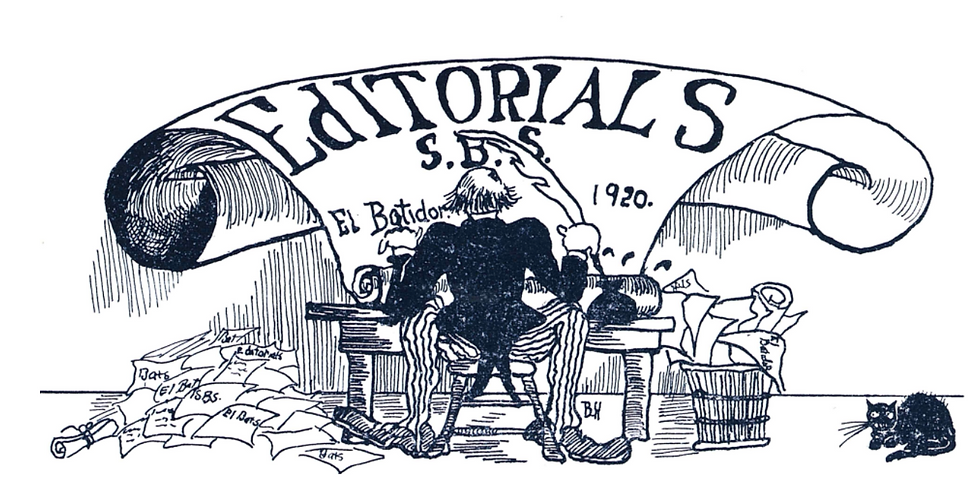Alison Wang’s Independent Study; Memory, Identity, and Forgotten Histories
- miagroeninger5
- May 23
- 3 min read
By: Lucy Guilbert-Neal '25
Last Thursday, Alison Wang presented her year-long independent study where she explored both research in immigration history within Cate’s own archives and broader national and state archives. She centered her project around the Asian immigrant laborers who lived on Cate’s campus from 1910 to 1947 and supported the school laundry, kitchen, buildings and grounds, and served as waiters for meals. She dove into not only the architectural, but also the cultural footprint of the building, nicknamed “Chinatown”, which housed these workers.
Much of the fall term, Alison oriented herself, with the help of Dr. Sintetos, to a few key texts in the field of Asian American Studies, including work by Mae Ngai. Dr. Sintetos also notes that she shared a scholarship by Saidiya Hartman with Alison on the politics of memory to help her ground her research as well as helping her to mine eBay for memoirs of Curtis Cate.
In the winter and spring, most of the focus remained on the Cate archive. Ms. Sintetos shared, “Luckily, Mx. LaMontaigne let us borrow their key, and Alison would often steal an hour or two of research while I was on duty in the Schoolhouse in the evenings. So much of researching isn't about "looking" for something per se, but about learning to notice with open eyes.” Dr. Sintetos explains that when you "look" for something, it implies you have a specific target in mind. However, by focusing on the process of inquiry itself, there’s greater opportunity for curiosity and exploration and in turn results in a richer outcome. As a result, Alison began to find information in unlikely places in the archive. Dr. Sintetos comments on students like Alison and those involved in the The Archives Club saying, “They have allowed me to bring that academic passion to my home at Cate.”
Alison’s talk concluded with a reflection on the power of cross-examining our institutional memory to center the gaps in the archive as its own evidence. She linked silencing in the present (on a national and local scale) to silencing in the past, impacting what is remembered.
Alison explains that the most difficult part of her project was “trying to string the archives together with the other information and connecting it to the broader history of the time.” She goes on to reflect the joy she felt feeling “personally connected to the things I was looking at and trying to put myself in the perspective of these lived experiences.”
For those that feel compelled to initiate their own independent study or even inquiry project in the future, Alison offers her advice, saying, “You really have to rely on your own initiative and know how to seek help. Give yourself more time than you need.”
Randy Person, Alison’s advisor for the last 4 years explains that some of the most fruitful moments come when an individual explores and shares their findings with the community. Alison asked our institution to acknowledge its past, and on top of that, she did all this without any promise of celebration or grade. Mr. Person says, “But that’s Alison; she’s magical because she will embark on the intensive, educational, and deeply personal and healing work without any fanfare. She does the work because it means something to her, and we are all the beneficiaries of her efforts.”




Comments